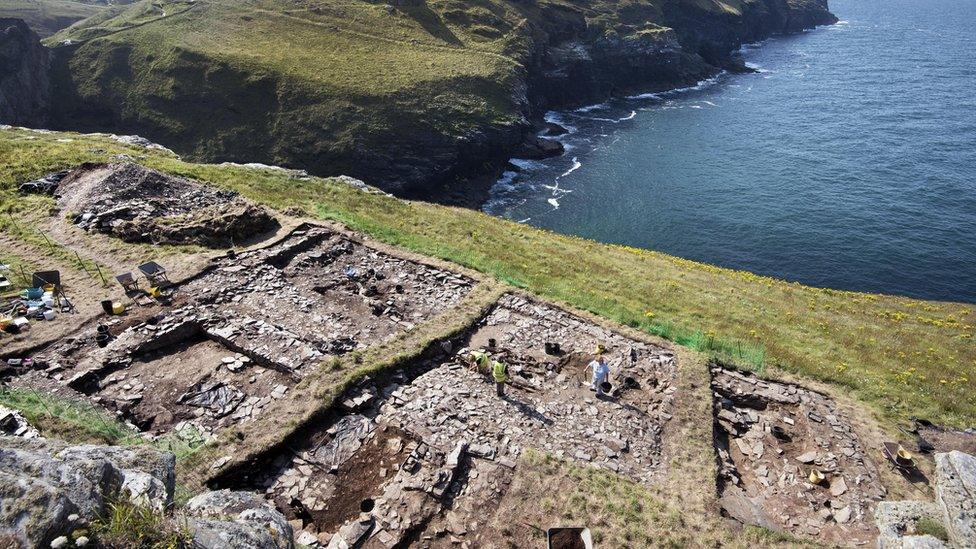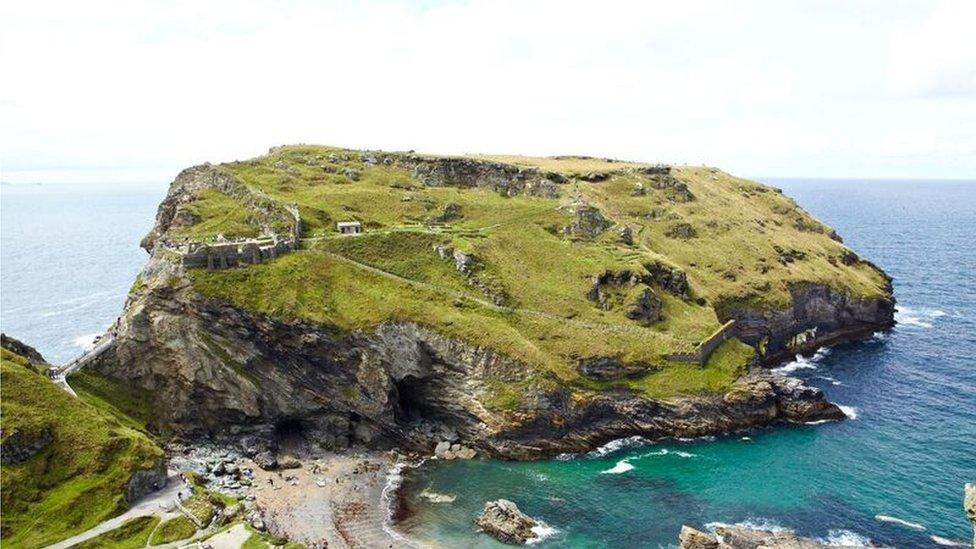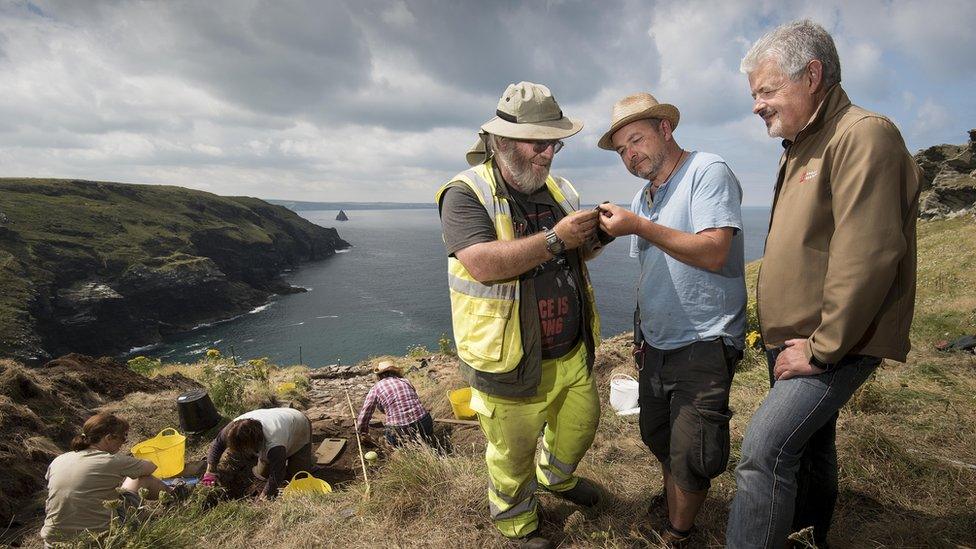Rare ancient writing found on medieval Cornish stone
- Published

The Latin words "fili" (son) and "viri duo" (two men) are distinguishable on the stone
A 1,300-year-old piece of Cornish slate inscribed with rare writing is "important" to understanding "post-Roman Cornwall", experts say.
The 7th Century stone is inscribed with ancient letters and Christian symbols, and appears to have been used for writing practice.
It has been put on display at Tintagel Castle, where it was found.
English Heritage says the stone points to the theory Tintagel was a royal site with a literate Christian culture.

Win Scutt says the find indicates Tintagel had professional scribes who were familiar with writing manuscripts
The 2ft (60cm) slate includes Roman and Celtic names "Tito" (Titus) and "Budic", which archaeologists say hints at a "thriving multi-cultural community" around the castle.
When it was found the slate was being used as a window ledge in a building that formed part of a "major early medieval settlement," according to English Heritage.
The stone was discovered last summer as part of a five-year project at Tintagel Castle, conducted by the Cornwall Archaeological Unit.

The first research excavations at the castle unearthed finds from the late 5th and 6th Centuries
Previous finds have included fine tableware from Turkey, decorated Spanish glassware, and evidence those at Tintagel Castle were feasting on pork, fish and oysters during "Cornwall's First Golden Age".
Professor Michelle Brown from the University of London, an expert on archaeology, manuscripts and writing, said the style of writing was as intriguing as the words on the slate.
"The survival of writing from this period is rare and this is a very important find, especially in terms of the continuity of a literate Christian tradition in post-Roman Cornwall," she said.
"The lettering style and language used, as well as Christian symbols exhibiting Mediterranean influence and contacts, all reveal precious clues to the culture of those who lived at Tintagel in the 7th Century."

The five year project at Tintagel Castle was commissioned by English Heritage
English Heritage Curator Win Scutt said: "It's incredible to think that 1,300 years ago, on this dramatic Cornish cliff-top, someone was practising their writing, using Latin phrases and Christian symbols."
He said writing was a "privileged pursuit" at the time, often associated with scribes attached to the Church or wealthy households. This, he said, supported theories the site was used by Cornish kings of old.
See more stories about archaeology around England on our Pinterest board, external

Cornwall in the 7th Century:
According to the Cornwall Heritage Trust, external a "Kingdom of Cornwall" emerged around the 6th Century out of the Celtic kingdom of Dumnonia, which covered much of what is now Devon and Cornwall
The 7th Century saw conflict with Saxons of Wessex, who were invading from the east
Saxon King Egbert began raiding in the 9th Century, and the Anglo-Saxon Chronicle details the defeat of an alliance between people from Devon, Cornwall and Vikings
The Annales Cambriae (The Annals of Wales) records that in 875AD, King Dungarth of Cornwall drowned in the River Fowey. Dungarth is thought to be the last known independent King of Cornwall
Cornwall is thought to have fallen under Saxon control in the 10th Century
- Published13 July 2017

- Published3 August 2016
